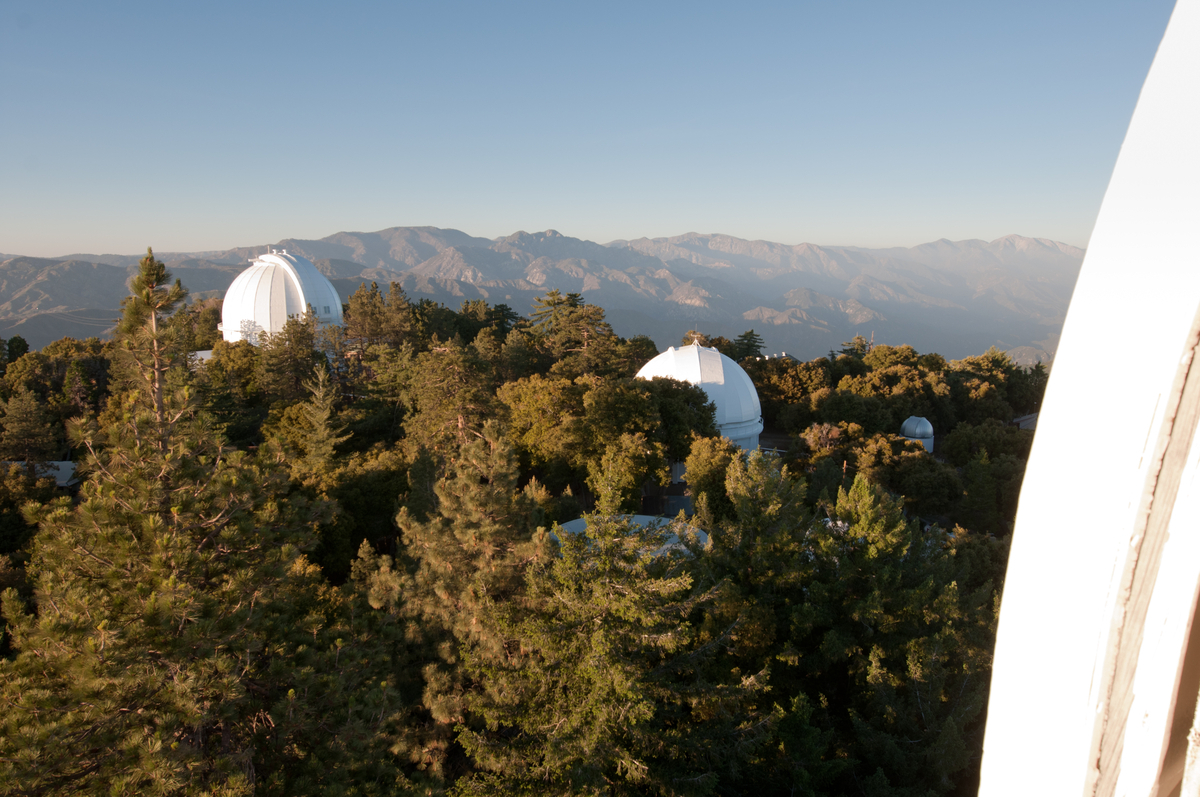Mount Wilson Observatory: Facts & Discoveries

Mount Wilson Observatory is a Los Angeles-area facility with several telescopes open to astronomers and the public. Located on a mountaintop at an altitude of more than 5,000 feet (1,524 meters), the observatory has been a useful location over the decades for measurements on stars, galaxies and other astronomical objects.
Perhaps its most notable discovery came in the 1920s, when Edwin Hubble used photographic plates from the 100-inch telescope to discover that the Andromeda Galaxy is a galaxy in its own right. Previously, the galaxy (and others like it) was believed to be "spiral nebulas" within the reach of the Milky Way.
More recently, the observatory narrowly escaped a devastating wildfire in 2009 that threatened the facility for several days.
History
Mount Wilson Observatory was founded in 1904 by George Ellery Hale, a pioneer in the field of astrophysics who studied chemical and physical processes in stars, according to the observatory's website. Hale began work on the mountaintop with the Snow Solar Telescope, which was moved to Mount Wilson from the Yerkes Observatory in Wisconsin (where Hale used to work).
"Hale and his colleagues developed new technologies to extract the information encoded in the light from distant astronomical objects," the website stated. The scientists used a combination of astronomical observations and lab experiments to do work.
Soon, Hale had bigger ambitions: he wanted a larger telescope at the facility. His father had purchased a 60-inch mirror while Hale was Yerkes' director. At Mount Wilson, Hale poured his energy and time into obtaining funding to bring the mirror to the new facility. With financial help from the Carnegie Institution of Washington, the 60-inch telescope saw first light in 1908.
"During the World War I years, Harlow Shapley used it to overturn the long-accepted view that the sun was at the center of our Milky Way Galaxy," the observatory stated on its website. "Shapley used the great light gathering power of the 60-inch to show that our solar system is instead halfway out toward the edge of our galaxy."
Breaking space news, the latest updates on rocket launches, skywatching events and more!
Astronomers used the 60-inch telescope in studies that led to the classification of stars by their light spectrum, which is a foundation of astronomy today, the observatory's website stated. The 60-inch also got one of the world's first adaptive optics systems — designed to change the telescope's mirror as the atmosphere fluctuates – between 1992 and 1995.
The other large telescope of Hale's era was completed in 1917. Called the Hooker 100-inch telescope — after its financial benefactor, John D. Hooker — the telescope was the largest in the world until 1948 (when it was surpassed by a 200-inch telescope at Palomar Mountain, which is 90 miles or 145 kilometers southeast.)
Notable milestones
Mount Wilson's 100-inch telescope set the stage for our understanding of cosmic distances to galaxies. Edwin Hubble was using the facility in the 1920s when he discovered something interesting in photographic plates of Andromeda.
At the time, Andromeda was believed to be a spiral nebula — a vast collection of gas in the cosmos. But Hubble noticed a Cepheid variable star within the galaxy. This sort of variable star has a predictable luminosity, meaning it can be used as a sort of "standard candle" to measure galactic distances.
When Hubble ran the calculations, according to the Smithsonian Institution, he discovered that Andromeda was so far away that it had to be a galaxy in its own right. And if that were true of Andromeda — which is relatively close and bright to Earth — it would be true of all other "spiral nebulas" as well.
Mount Wilson took part in an experiment to accurately measure the speed of light. It was performed by Albert Michelson, who had previously won a Nobel Prize in 1907 for some of his first work on the experiment. Michelson continued to tinker with the measurements, which included a 1924-26 set of work at Mount Wilson.
"Mount Wilson served as the launch site for a brilliant beam of light that shone across the San Gabriels, bounced from a return mirror located on a side ridge of Mount San Antonio, and re-traversed the 22 miles separating the two mountains," the observatory stated.
"A rapidly rotating mirror, driven by compressed air, screamed like a siren. By measuring the tiny change in angle of the mirror during a round trip of a burst of light, taking only two ten-thousandths of a second, the speed of light was measured."
Modern days
The observatory escaped a devastating wildfire in 2009 that threatened the telescopes and facilities for several days. Firefighters spent several days doing their best to keep the flames away, but things were looking dire as they removed materials such as brush that would spread the fire, and put chemicals and fire lines in place.
The tables began to turn after higher humidity and falling temperatures made the fire less potent. "We're pretty confident," Los Angeles County Fire Inspector Edward Osorio told the L.A. Times in a quote republished by Space.com on Sept. 30, 2009. "Mt. Wilson is going to be OK."
The observatory also emphasizes public education, and offers public access to its 60-inch telescope. "The 60-inch is the largest telescope in the world devoted entirely to public viewing of astronomical objects. Its large light collecting mirror and the exquisite skies over Mount Wilson provide an unrivaled and unique experience," the observatory stated on its website.
The observatory is open to visitors every day from 10 a.m. to 5 p.m. from April 1 through November 30, weather permitting, according to the observatory's website.
Further reading

Elizabeth Howell (she/her), Ph.D., was a staff writer in the spaceflight channel between 2022 and 2024 specializing in Canadian space news. She was contributing writer for Space.com for 10 years from 2012 to 2024. Elizabeth's reporting includes multiple exclusives with the White House, leading world coverage about a lost-and-found space tomato on the International Space Station, witnessing five human spaceflight launches on two continents, flying parabolic, working inside a spacesuit, and participating in a simulated Mars mission. Her latest book, "Why Am I Taller?" (ECW Press, 2022) is co-written with astronaut Dave Williams.
